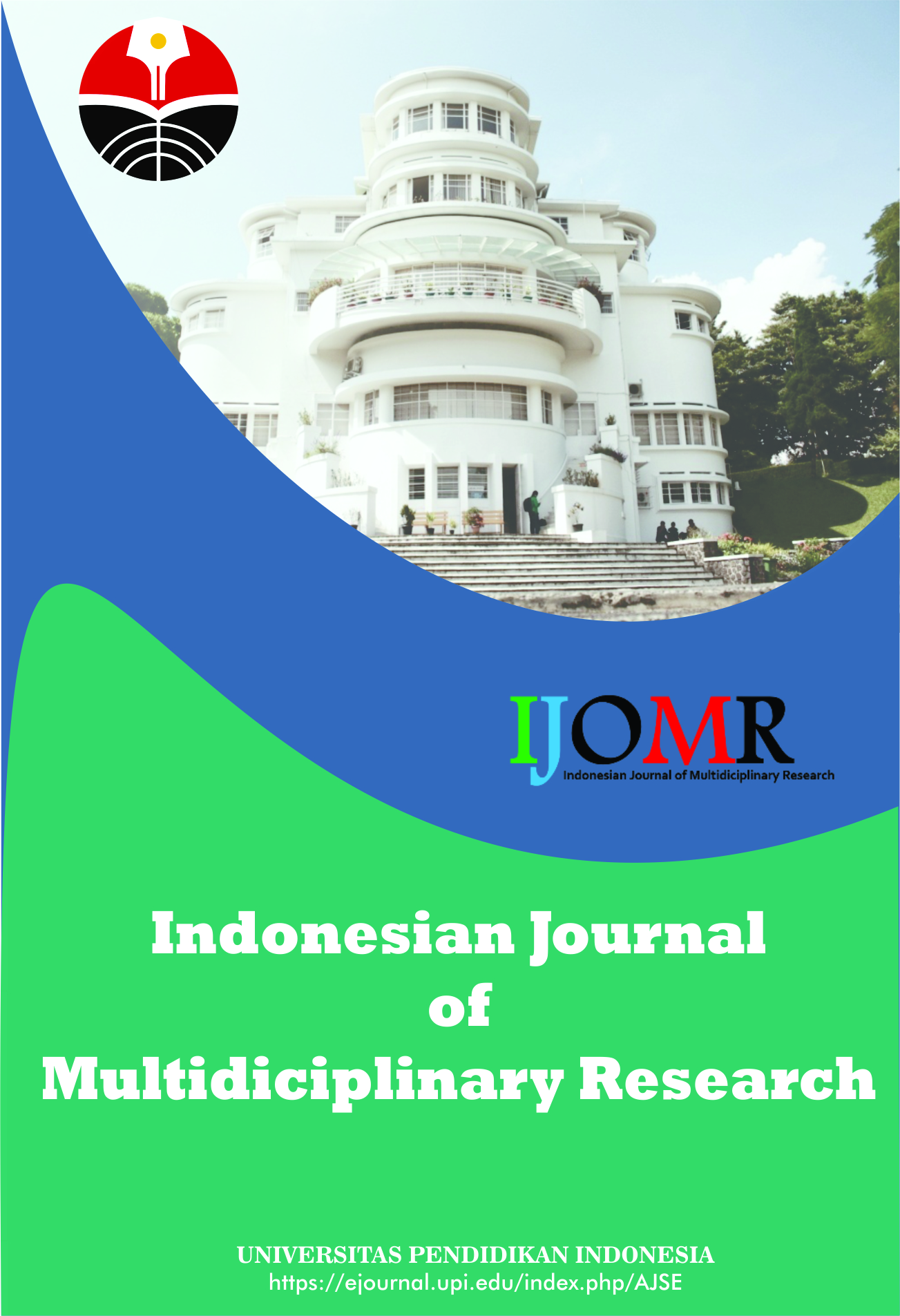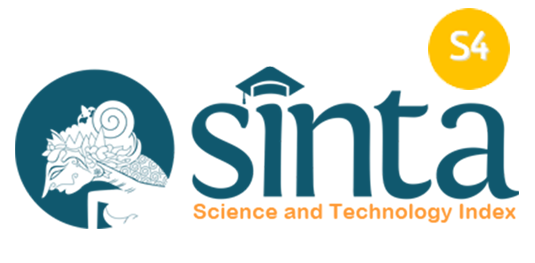How to read and Interpret GC/MS Spectra
Abstract
Keywords
Full Text:
PDFReferences
Williams, B. J., Jayne, J. T., Lambe, A. T., Hohaus, T., Kimmel, J. R., Sueper, D., and Worsnop, D. R. (2014). The first combined thermal desorption aerosol gas chromatograph—Aerosol mass spectrometer (TAG-AMS). Aerosol Science and Technology, 48(4), 358-370.
Bridge, C., Maric, M., and Jones, K. (2018). GC× GC–MS for Forensic Analysis. The Column, 14(12), 25-31.
Chiu, H. H., and Kuo, C. H. (2020). Gas chromatography-mass spectrometry-based analytical strategies for fatty acid analysis in biological samples. Journal of Food and Drug Analysis, 28(1), 60–73.
Fitzgerald, R. L., Griffin, T. L., and Herold, D. A. (2010). Analysis of testosterone in serum using mass spectrometry. Methods in Molecular Biology (Clifton, N.J.), 603(2010), 489–500.
Wallace, J. E., Harris, S. C., and Shimek Jr, E. L. (1980). Evaluation of an enzyme immunoassay for determining diazepam and nordiazepam in serum and urine. Clinical chemistry, 26(13), 1905-1907.
He, M., Yang, Z. Y., Guan, W. N., Vicente Gonçalves, C. M., Nie, J., and Wu, H. (2016). GC-MS Analysis and Volatile Profile Comparison for the Characteristic Smell from Liang-wai Gan Cao (Glycyrrhiza uralensis) and Honey-Roasting Products. Journal of Chromatographic Science, 54(6), 879–887.
Heit, C., Eriksson, P., Thompson, D. C., Fritz, K. S., and Vasiliou, V. (2017). Quantification of Neural Ethanol and Acetaldehyde Using Headspace GC-MS. Physiology and Behavior, 40(9), 1825–1831.
Holcapek, M., and Byrdwell, W. C. (2017). Handbook of advanced chromatography/mass spectrometry techniques. Chapter, 10(2017), 365.
Al-Rubaye, A. F., Hameed, I. H., and Kadhim, M. J. (2017). A review: uses of gas chromatography-mass spectrometry (GC-MS) technique for analysis of bioactive natural compounds of some plants. International Journal of Toxicological and Pharmacological Research, 9(1), 81-85.
Simon-Manso, Y., Lowenthal, M. S., Kilpatrick, L. E., Sampson, M. L., Telu, K. H., Rudnick, P. A., and Stein, S. E. (2013). Metabolite profiling of a NIST Standard Reference Material for human plasma (SRM 1950): GC-MS, LC-MS, NMR, and clinical laboratory analyses, libraries, and web-based resources. Analytical chemistry, 85(24), 11725-11731.
Kala, S. M. J., Soris, P. T., and Mohan, V. R. (2012). GC/MS Determination of Bioactive Components of Eugenia Flocossa Bedd. (Myrtaceae). Journal of American Science, 3(1), 277–282.
Li, B., Kong, J., Yang, L., Zhang, L., Zhang, Z., and Li, C. (2020). Direct detection of chemical warfare agent simulants in soil by thermal desorption-low temperature plasma-mass spectrometry. International Journal of Mass Spectrometry, 451(2020), 1–9.
Pellett, J., Lukulay, P., Mao, Y., Bowen, W., Reed, R., Ma, M., and Snyder, L. R. (2006). “Orthogonal” separations for reversed-phase liquid chromatography. Journal of Chromatography A, 1101(1-2), 122-135.
Mujawar, S., Utture, S. C., Fonseca, E., Matarrita, J., and Banerjee, K. (2014). Validation of a GC-MS method for the estimation of dithiocarbamate fungicide residues and safety evaluation of mancozeb in fruits and vegetables. Food Chemistry, 150(2014), 175–181.
Quach, D. T., Ciszkowski, N. A., and Finlayson-Pitts, B. J. (1998). A new GC-MS experiment for the undergraduate instrumental analysis laboratory in environmental chemistry: Methyl-T-butyl ether and benzene in gasoline. Journal of Chemical Education, 75(12), 1595–1598.
Saeed, I. M., Lee, V. S., Mazari, S. A., Si Ali, B., Basirun, W. J., Asghar, A., Ghalib, L., and Jan, B. M. (2017). Thermal degradation of aqueous 2-aminoethylethanolamine in CO2 capture identification of degradation products, reaction mechanisms and computational studies. Chemistry Central Journal, 11(1), 1–12.
Schauer, N., Steinhauser, D., Strelkov, S., Schomburg, D., Allison, G., Moritz, T., Lundgren, K., Roessner-Tunali, U., Forbes, M. G., Willmitzer, L., Fernie, A. R., and Kopka, J. (2005). GC-MS libraries for the rapid identification of metabolites in complex biological samples. FEBS Letters, 579(6), 1332–1337.
Schwarzbauer, J., and Jovančićević, B. (2020). Introduction to Analytical Methods in Organic Geochemistry. Basingstoke: Springer Nature.
Smith, D. H., Achenbach, M., Yeager, W. J., Anderson, P. J., Fitch, W. L., and Rindfleisch, T. C. (1977). Quantitative Comparison of Combined Gas Chromatographic/Mass Spectrometric Profiles of Complex Mixtures. Analytical Chemistry, 49(11), 1623–1632.
Wu, H., Guo, J., Chen, S., Liu, X., Zhou, Y., Zhang, X., and Xu, X. (2013). Recent developments in qualitative and quantitative analysis of phytochemical constituents and their metabolites using liquid chromatography–mass spectrometry. Journal of Pharmaceutical and Biomedical Analysis, 72(2013), 267-291.
Sinha, A. E., Fraga, C. G., Prazen, B. J., and Synovec, R. E. (2004). Trilinear chemometric analysis of two-dimensional comprehensive gas chromatography–time-of-flight mass spectrometry data. Journal of Chromatography A, 1027(1-2), 269-277.
Van Asten, A. (2002). The importance of GC and GC-MS in perfume analysis. TrAC - Trends in Analytical Chemistry, 21(9–10), 698–708.
Vene, K., Seisonen, S., Koppel, K., Leitner, E., and Paalme, T. (2013). A method for GC-olfactometry panel training. Chemosensory Perception, 6(4), 179–189.
Cambria, T., and McManus, J. (1990). Identification and removal of impurities in silane and dichlorosilane gas streams. Solid State Technology, 33(10), 95-99.
DOI: https://doi.org/10.17509/ijomr.v1i2.35191
Refbacks
- There are currently no refbacks.
Copyright (c) 1970 Kantor Jurnal dan Publikasi, Universitas Pendidikan Indonesia (UPI)

This work is licensed under a Creative Commons Attribution-ShareAlike 4.0 International License.
Indonesian Journal of Multidiciplinary Research (IJOMR) is published by Universitas Pendidikan Indonesia (UPI)















